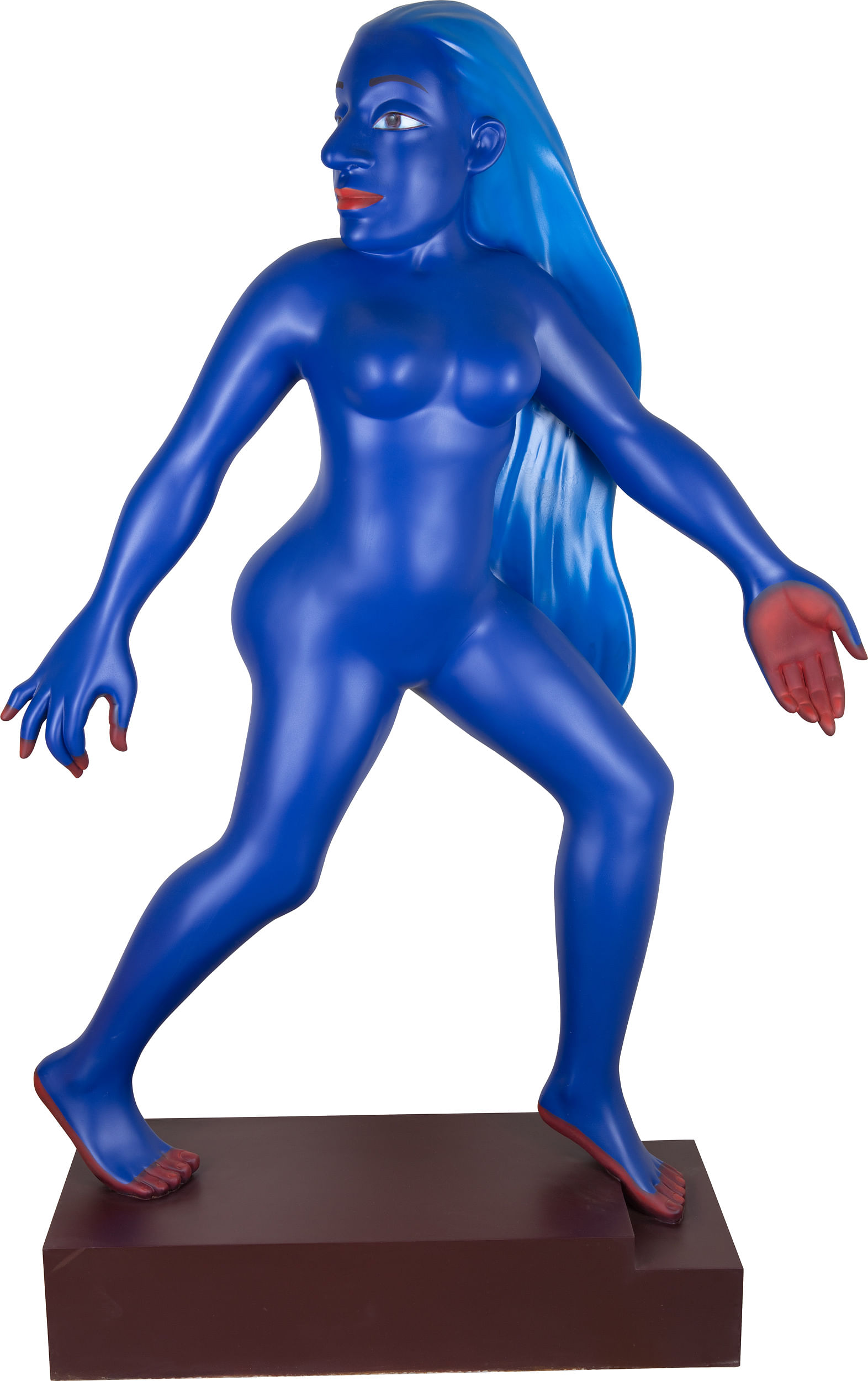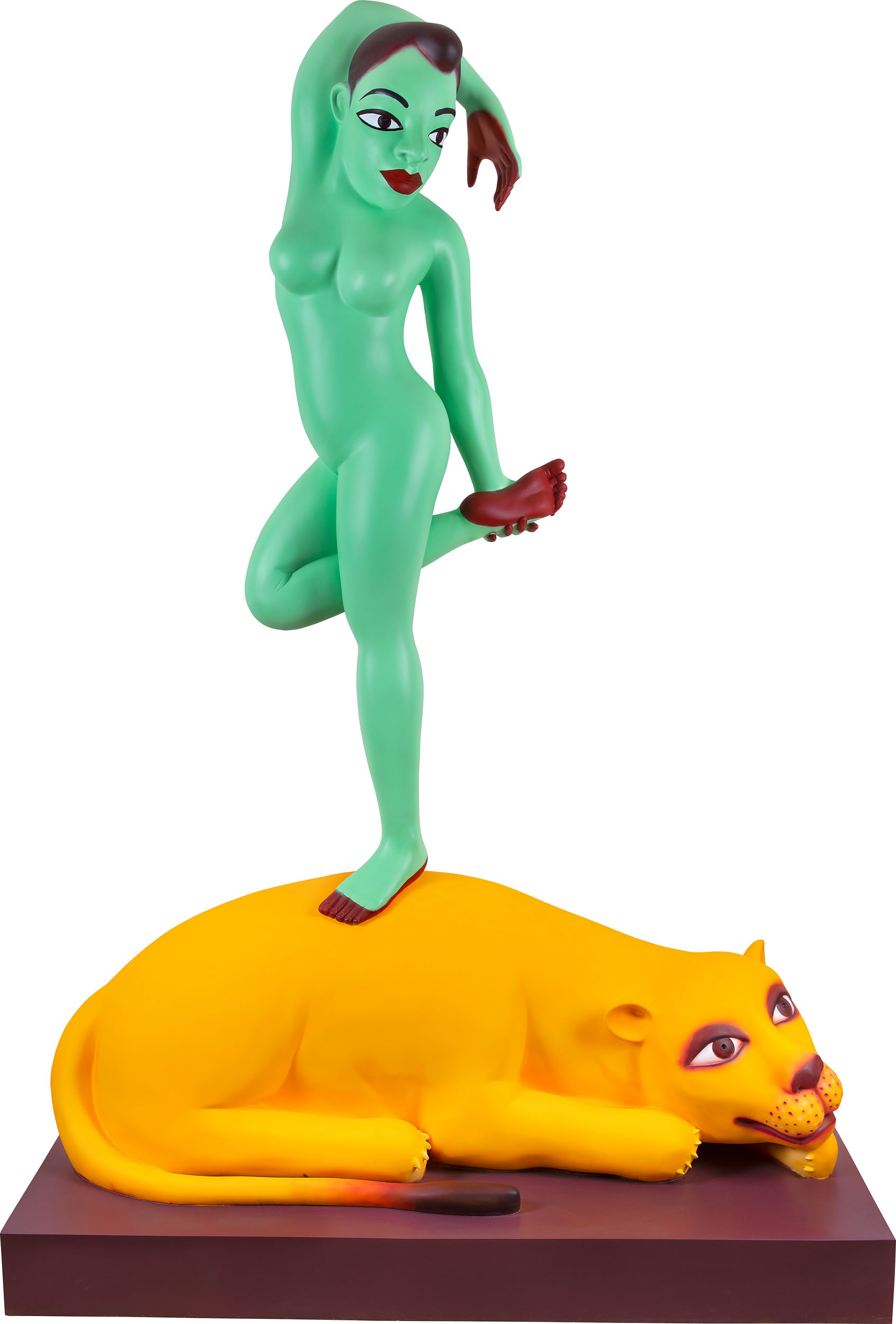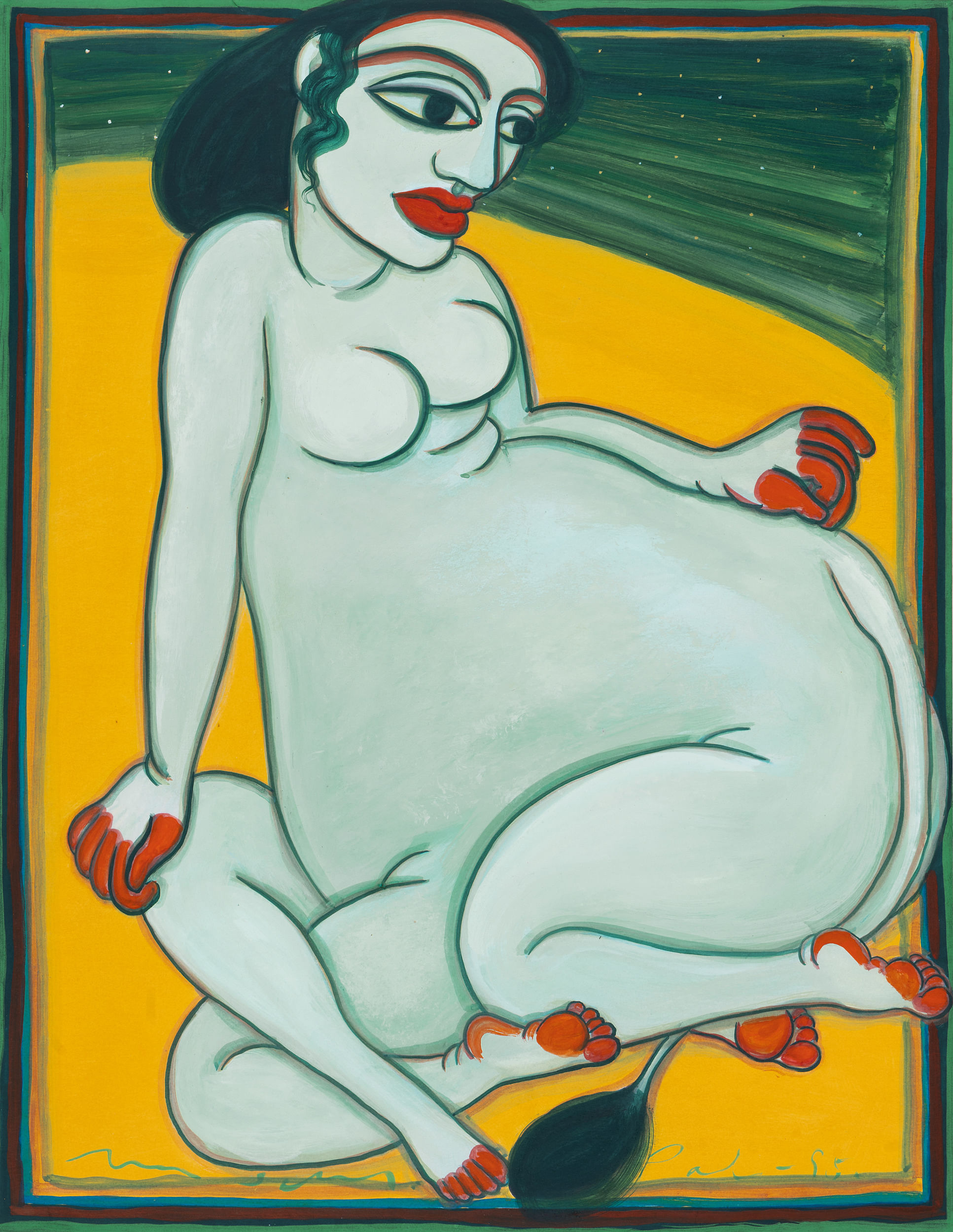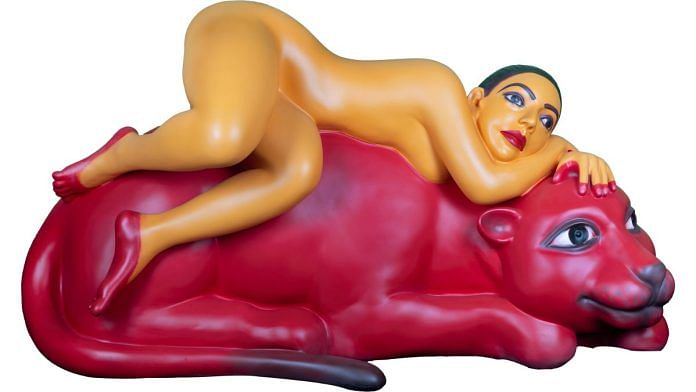New Delhi: Indian contemporary artists often toggle smartly between tradition and revolt, but Gogi Saroj Pal does it with a rich sense of irony and her unique feminist voice.
To portray the Hindu goddess Kali with all her signature iconography—the alta in her palm and sole and riding a tiger—and yet convey a bold 21st-century feminist statement is what Pal does.
A dark blue, naked woman with her long hair open—and the red alta on her palm—is titled ‘I Will Draw my Own Laxman Rekha’, it’s part of the Hathyogini series. Another shows a green, naked Kali with short, page-boy hair perched on top of a tiger.
In a new exhibition of her work at DAG, Pal’s voice and gaze are loud and clear. She reinvents how the female body is represented and viewed. She sees the fluid, fierce femininity in a bird, the Kamadhenu cow, Kali and the coquettish nayika. In all these, the female nakedness on her canvas defies the objectifying male gaze.

From self-portraits using traditional symbols to paintings portraying resistance and documenting history, Pal’s work consistently remained both rooted and ahead of her time. The use of motifs from tradition and myths of India was not unusual, but Pal went beyond the obvious symbols and their conventional usage. She used the process of transfiguration to turn mythical creatures such as the kinnara, the mythical part-human part-bird and kamadhenu, the ‘mother of all cows’, into expressions of the self. She also closely observed the strategies used to represent women in popular culture, and added her own artistic voice to it, through her series on nayikas.
“In the hills in which she lived, in the plains where the family settled, in the city which she now inhabits and in all the multiple terrains that Gogi’s journeys have marked, she has found stories and more stories, and these stories transformed into her many complex women,” wrote Urvashi Butalia in her curatorial essay, The Stories in Her Head.
An exhibition, titled Gogi Saroj Pal: Mythic Femininities is on display at the Delhi Art Gallery (DAG) in Janpath, till 25 May. From her sculptures, on public view for the first time, to a collection of her paintings featuring kinnaris, kamadhenu, hathyoginis, self-portraits, and nayikas, the exhibition gives an overview of the pioneering artist. She was considered a feminist even before the term arrived in India.
The exhibition also includes sketches from her days as a student at the Faculty of Fine Arts, University of Lucknow. It gives a unique insight into the journey of how she found her style and voice.
Pal’s works also signify a myth-making process of her own, with particular colours and depictions of the female form, interwoven with existing mythos and mythical figures.
Also read: This Delhi art exhibit on throwaway culture is full of ‘trash’. The medium is the message
The realm of agency
Pal’s work is deeply personal. Her Kamadhenus reflects womanhood—it depicts the role of women as caregivers, along with the anxiety of being exploited for that very quality. “If someone is well-behaved, she is said to be like a cow. But a cow is not asked about its own will or wishes, are they? I find these fascinating, so I put them in my work as if to exaggerate the feeling,” Pal told DAG in an interview late last year.
If her kamadhenus are about the limitations of being a woman in a patriarchal society, kinnaris were Pal’s way of exploring the realm of agency. “The kinnari, transfigured in the form of a birdwoman, became for Gogi, expressive of all forms of her subjectivity: her feelings, emotions and fantasies,” writes Roobina Karode, director and chief curator of the Kiran Nadar Museum of Art, in her curatorial note of Pal’s work.
Pal suffered from various illnesses. She underwent hip replacement surgery in 2008 which resulted in a long and painful period of recovery. As she was confined to her house during this time, she spent her time making art. “She visualised herself inhabiting the body of the house sparrow perched at the window, the boundary where the inside and outside worlds met, but flying as a physical act seemed cumbersome even in drawing and painting,” writes Karonde. Her recovery process, from bed rest to chair, was documented in her half-human-half-bird paintings, where she became the kinnari. Depending on how the wings were depicted in a particular painting, there was also the reference to weightlessness, shrouding or shielding the body, or swiftly taking a flight of freedom.
“She decided to become an artist even though her family

disapproved. She stayed on her own in Daryaganj and worked and also painted. She was determined to become an artist,” said Ved Nayar, Pal’s husband and a sculptor.
This passion drove her desire to continue painting even after the surgery restricted her movement.
“Despite enduring this huge operation, she continued to work, creating a series of small-format works, using a table on her bed as an improvised easel. For someone who liked to be on the move—from her studio to her exhibitions in different countries—she now found herself restricted at home, which deeply bothered her,” wrote Rekha, a domestic worker at Pal’s residence, in a curatorial note for the exhibition.
Pal died on 27 January 2024, at the age of 79.
Also read: Cats, culture, communities—art affair in Delhi showcases bond between tribals & tigers
Redefining the female form
Pal’s work defies all that was known and understood, in Indian art, about the female form. She created her own language, and despite setbacks, and criticism from the art fraternity, refused to take a step back in any manner. What mattered was her interpretation of art.
The nayika and hathyogini series of paintings are almost in direct contrast with each other. What ties them together is the female form depicted without clothing.

In the nayikas series, she focused on the role of women as lovers and objects of desire. They are always seated or reclining. The nayikas are painted with bold colours, often depicted with open hair and palms smeared with alta. There is an element of coquette in the nayika series, along with a sense of performativity—she’s simply playing a role, instead of being her true self.
In the hathyogini series, Pal uses either green or dark blue. In the sculpture ‘I Will Draw my Own Laxman Rekha’, the blue goddess stands in a posture of assertion. In another painting in the hathyogini series, the goddess is depicted performing a branch of yoga usually associated with men. The coquettishness or desire is absent here.
“She would have loved the exhibition. She would have wheeled herself around it furiously telling stories to all who cared to listen. And then she would have gone home and poured herself a drink and begun contemplating new work. Indefatigable, that’s what she was. Passionate, crazy, excitable, funny, mischievous… you see all of that in her work,” said writer and friend of Pal Urvashi Butalia.
(Edited by Theres Sudeep)



